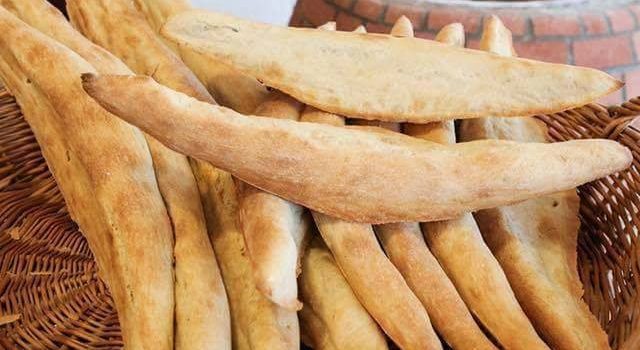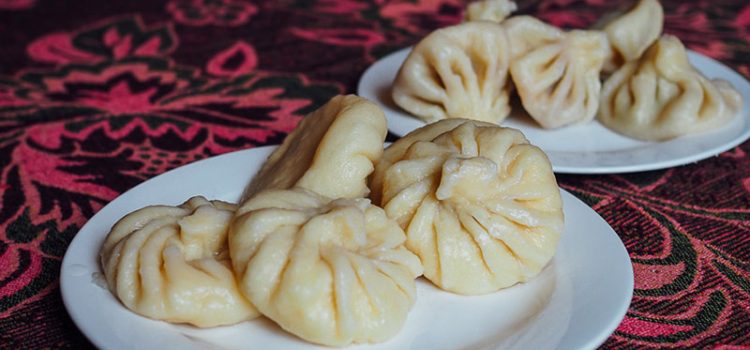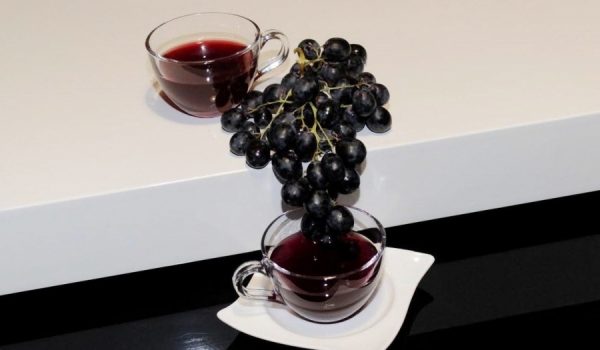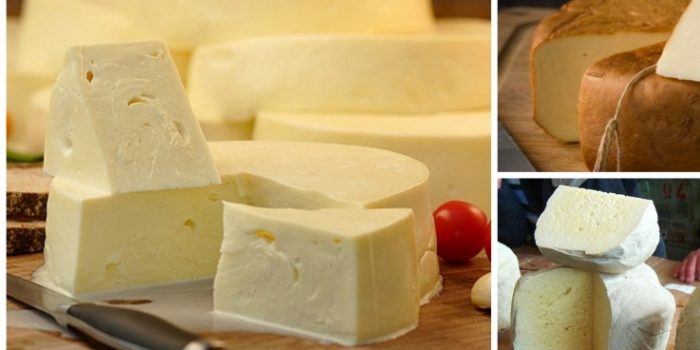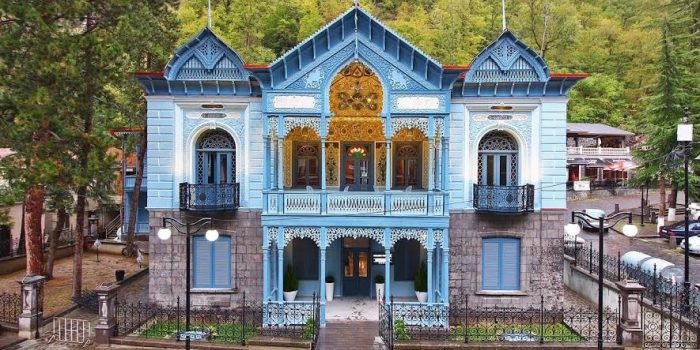Khachapuri among 100 best-rated dishes on TasteAtlas
Georgian traditional dish Khachapuri is one of the best-rated dishes on TasteAtlas. The website discovers local ingredients, traditional dishes, and authentic restaurants throughout the world.
khachapuri is the most famous dish in Georgia. The pastry is traditionally topped with melted cheese, eggs and butter. There are different types of khachapuri but it is usually filled with Georgian Sulguni or Imeretian cheese. Three of the most common varieties include the Imeretian khachapuri, shaped into a circular form, Adjarian khachapuri, the open boat shaped version topped with butter and a raw egg on top and Megrelian Khachapuri shaped into a circular form and topped with melted cheese.
TasteAtlas also offers information about plenty of other traditional Georgian dishes from appetizers such as Jonjoli and Badrinaji to Georgian sweets Pelamushi or Churchkhela.
Source: Georgianjournal.ge
The World Talks about Georgian Shoti Bread
Georgian cuisine is well-known across the world. Various websites such as FoodAtlas or Culinary Backstreets have devoted multiple articles to the traditional Georgian dishes. One of the most celebrated Georgian foods is Shoti Bread (in Georgian “Shotis Puri”). This canoe-shaped bread is distinguished not only by its taste but also the way it is traditionally baked.
“It is incredibly hard work. Marekhi’s day begins at 4:30 a.m., when she and her co-worker Nona Khatiashvili (no relation) start making giant tubs of dough in the back of the low-ceilinged bakery, ready to be baked into the long, flat loaves of bread that Georgians call shoti. It’s a ritual of daily life here.
As they turn and press the heavy mix of flour, water, salt, and yeast, it is almost up to their elbows.
Everything is done by hand. That’s the special ingredient,” reads Culinary Backstreets’s article about the bread.
Shoti bread is a flat bread soft inside and crispy outside. It is baked vertically in a sunken stone oven (tandoori) known as “Tone” in Georgian. Traditionally in order to bake Shoti all you need is a mix of flour, water, salt, and yeast. After mixing you should knead the dough by hand.
“The freshly baked bread is then placed on wooden racks to cool, and it is usually sold wrapped in a sheet of paper.
Shotis puri is consumed as an everyday bread, but it is especially popular during festive events such as Easter, Christmas, and birthdays,” TasteAtlas about Shoti bread.
Source: Georgianjournal.ge
Georgian Wines Evening Held in Italy
Tasting of Georgian Qvevri wines at an event titled “The Beginning of Everything” was offered in Italy in cooperation with the Embassy of Georgia in Italy, the Rome Sommelier Association ‘Divinamente Roma’ and Georgian National Wine Agency (NWA), the Ministry of Foreign Affairs of Georgia reports.
Konstantine Surguladze, Ambassador Extraordinary and Plenipotentiary of Georgia to Italy, addressed the audience with a welcome speech, emphasizing the special cultural significance of Georgian winemaking and speaking about Georgian history, traditions and culture.
At the event, representative of the NWA Giorgi Tevzadze introduced the ancient history of Georgian wine and winemaking technology in Qvevri. Four different kinds of Qvevri wine were presented for tasting. Together with Georgian wines, visitors tasted Qvevri wines made by Italian and Greek winemakers, including ‘Ribola’ by Yosko Gravner, a prominent Italian winemaker and pioneer of Georgian Qvevri and Georgian technology in Europe, which was introduced by his daughter Matteia Gravner.
The event was attended by sommeliers, Italian wine-producing companies and media representatives.
Source:Georgiatoday.ge, By Mariam Merabishvili
Georgian restaurants in Kiev, Ukraine winning the hearts of their guests
Kyiv Post, Ukraine’s oldest English language newspaper has recently published an article about Georgian restaurants in Kiev. The article familiarizes the readers with particular Georgian flavor which was influenced by western and eastern traditions over the years.
“But Georgian cuisine has today developed its own unique flavor, and their khinkali (dumplings) and khachapuri (cheese bread) are the country’s calling cards.”
The first restaurant is Gogi (a Georgian male name) which offers a wide range of Georgian dishes, desserts and, wines accompanied by folk music playing background. Some of the dishes are Khinkali filled with meat, cheese, potato and mushrooms, Adjarian Khachapuri (a boat-shaped cheese bread) and Pkhali (a vegetarian appetizer).
The second restaurant is Suluguni (a type of Georgian cheese from the western region Samegrelo). The restaurant is located in the city center having a stylish design, a terrace, and lively Georgian music. The restaurant offers signature and classic Georgian dishes including a house-made drink such as a type of yogurt Matsoni.
The name of the third restaurant is very interesting – Oi, Mamo! Tse bulo v Tbilisi (Oh, Mom! It was in Tbilisi). The restaurant offers a wide choice of traditional Georgian dishes including, the kada dessert made with walnuts and cream. The legend behind the creation of the restaurants says that once a Kiev citizen visited Tbilisi, the capital of Georgia and was impressed by a Georgian family café – Tbilisi. Then the family moved to Kiev and opened the restaurant.
The restaurant Khinkali has five different zones for business meetings, celebrations or a summer terrace.
“The menu includes khinkali with various fillings: mutton and green adjika, veal and basil, veal tongue and mushrooms in a rich cream sauce, the classic mix of pork and veal, shrimps in cream sauce, and spinach and mushrooms.”
Besides, Khinkali offers the classic Adjarian khachapuri and the tasty pan-fried chicken tabaka.
The restaurant 99 Lari (“lari” is the name for Georgian currency) serve three types of Khachapuri boat-shaped Adjarian, circular Imeretian, and Megrelian, also circular, but sprinkled with cheese, kharcho soup with beef and tomatoes, Georgian desserts as well as vegetarian dishes such as roasted vegetables with walnut cream. 99 Lari gives out free drinks and appetizers from the chef.
And, lastly, Matsoni restaurant named after the Georgian yogurt “Matsoni”. The restaurant serves Matsoni made with fresh milk from small farms, Megrelian Khachapuri, chakhokhbili stewed turkey with fresh herbs and two varieties of Matsoni. The cozy atmosphere of the restaurant attracts guest on cold winter and fall days.
Source: Georgianjournal.ge
Wine Tea – Brilliant Georgian Innovation
‘Wine Tea’ project is the winner of Startup Georgia state program. One of its authors is Giorgi Bukia, who says that the idea to produce wine tea belongs to a pharmacologist named Irakli Natroshvili, who was making a research on the beneficial characteristics of red wine (Saperavi) 25 years ago.
He says various kinds of experiments were carried out and as a result, a loose mass obtained was named a wine tea. Bukia also says this project had been left unattended for years and 2 years ago Irakli Natroshvili’s son Giogi Natroshvili decided to revive it. He brought the project to Giorgi Bukia and they presented it to the Startup Georgia program. As the author of the project says, there are several stages of wine processing and the resulted loose mass is packaged. As for the preparation, it is not any different from the regular tea.
According to him, there are only experimental samples of products today – serial production will start from November when the enterprise is finished. The search for the place to set up the enterprise is taking place currently and presumably it will be located in Kakheti region of eastern Georgia. At the initial stage the product will be sold on the local market. In addition, the samples were sent to Ukraine and Russia. Giorgi Bukia believes that there is a prospect of wine tea in Muslim countries as well where alcohol is prohibited but they love the aroma of wine.
One of the authors of the project plans to develop other Georgian varieties of wine in future, but at this stage the focus is on Saperavi. “Wine Tea” will be marketed by “Amato” brand. According to Giorgi Bukia, they plan close cooperation with wine companies and tea producers in the future. The “Wine Tea” project was funded by Startup Georgia project with 100 thousand Georgian laris.
Source: Allwine.ge, Photo: Georgianjournal.ge
Georgia among top 10 countries on the World Cheese Map
Georgian cheese has been listed among top 10 cheeses on the world cheese map. There exist thousands of different sorts of cheese that stand out for their wide range of flavors and various textures. Each country has its own method of cheese making and Georgia is no exception. Apart from delicious, hearty and spicy dishes, Georgia can boast a number of different sorts of cheeses that come from country’s different regions. Here we present three most famous and widespread types of Georgian cheese.
Although Georgia is a small country, it produces more than 250 types of cheese. This dairy product is so popular that there is one famous quote in Georgian “If you don’t have kveli (cheese in Georgian) at home, then you are dead”. Georgian supra (feast table) is unimaginable without Kveli, be it soft and tender Imeruli cheese from Georgia’s Imereti region or more rough and slightly sharp flavored Guda cheese from mountain region of eastern Georgia. The latter is usually made from sheep’s or cow’s milk and is aged in sack made from cheep’s skin for weeks. This method of cheese making was invented by the shepherds in the mountains of Georgia.
Imeruli Cheese, Guda Cheese, Guda cheese and Shoti (Georgian bread) And here we come to the queen of Georgian cheeses, Sulguni that originated from Georgia’s Samegrelo region (an area in the western part of the country). This type of cheese is soft, has a sour, moderately salty flavor, a dimpled texture, and an elastic consistency. It is noteworthy that Sulguni is often compared to Italian Mozzarella, due to its texture and taste. Sulguni may be produced from normalized milk of cow, buffalo, or a mix of these milks. It is a “quick cheese” maturing in just one or two days. There exist two types of Sulguni cheese – an ordinary one and smoked Sulguni. According to the folk etymology, the name Sulguni comes from two Georgian words – suli (which means “soul”) and guli (which means “heart”). Georgians usually consume cheese with Mchadi (Georgian corn bread), Ghomi (corn meal) Shoti (Georgian bread baked in the clay oven) or bake Khachapuri (Cheese bread) from it. Among the very delicious cheeses in Georgia are: Sulguni Cheese and Smoked Sulguni Cheese.
Source: Georgianjournal.ge
Photo: Georgianjournal.ge
The Guardian: Khinkali best eaten with alcohol
The Guardian published an article about the traditional Georgian dish Khinkali in 2017. The article reads about its history, art of consuming the dish and its types as well.
Georgians were ruled by Greeks, Romans, Iranians, Arabs, Byzantians, Mongolians, Ottomans, and Russians over the years. All of them brought their cuisine and ingredients into Georgia. Georgia managed to incorporate all the new ingredients and meals to create an identity for Georgian cuisine. When you eat Georgian food, you do not think it is Mongolian or Chinese but Georgian. Khinkali is believed to be brought by Mongolian warriors in the 13th century.
The dish is similar to the Taiwanese soup dumpling, xiaolongbao. The Georgian dumplings are filled with meat and spices (mushrooms, potatoes, cheese can be used instead of meat), then traditionally twisted into a knot at the top. Regional differences influence the fillings and every part of Georgia has their distinctive variety. For example, in the mountainous regions, the most traditional filling is lamb. The most frequent variety (often served in Georgian restaurants) throughout entire Georgia is a mixture of pork and beef.
Khinkali are traditionally the food of shepherds in the Tusheti and Pshavi regions mountainous regions of northern Georgia.
“Locals are skilled in the art of extracting the hot juices in one bite, cautiously using the top knot of dough as a handy grip. Plates strewn with discarded knots sit on cafe tables.”
The founder of Kartveli Tours (tours in Georgia) Irakli Shengelia says to the Guardian that both beer and vodka goes well with the dish. He explains the Georgian term Chakiduli meaning “a shot of vodka followed by a beer”.
Source: Georgianjournal.ge
CNN about abandoned Tskaltubo Spa
CNN has recently published an article about the abandoned sanatoriums of Tskaltubo, a town in the west part of Georgia. The article states that throughout the Soviet era, the USSR built 186 sanatoriums across the state. Tskaltubo spa is considered to be one of the best sanatoriums.
The natural springs emanate from limestone massifs deep beneath the ground, releasing radon-carbonated and mineral-enriched water. According to the European Historic Thermal Towns Association, the spa was regarded as “waters of immortality” dating back to 7th century. The springs are believed to have healing properties.
After the fall of the Soviet Union, the sanatorium lost its function, vines, bushes, and weeds found their ways through the pillared hallways into the bathing rooms. Later in 1992, a bloody conflict broke out between government forces and separatists who fought for the independence of Abkhazia, a disputed autonomous republic in northwestern Georgia. After the fall of Sukhumi, the capital city of Abkhazia, thousands of Georgians were forced to flee the city. The refugees found the deserted corridors of the Tskaltubo sanatorium as a shelter.
The refugees have never left the place. The original settlers have had children, and now grandchildren. They had to adapt and create makeshift homes.
The design of the sanatoriums was a model of progressive Soviet architecture. The architecture was a fusion of what is now known as classical Stalinist design and ethnic Georgian decor, as well as Gothic and Roman features.
“They were frozen in time and objects were just sitting there, as if someone had just got up and left. It was as if the buildings were still used by the Soviet citizenship. But the objects had now become artifacts.” – said the photographer Ryan Koopmans. The article is accompanied by his photographs taken in Tskaltubo.
Leaving behind the bad times, the government has begun to re-home refugees and developers plan to relaunch the spa as a luxury tourist destination. Thus, these photographs of Tskaltubo sanatorium might soon be the last memory of the era.
Source: Georgianjournal.ge, Photo: Georgianjournal.ge
Caucasus Wine University to be opened in Gurjaani
In the Kakheti region a new viticulture campus of the Caucasus University is in the process of planning. Although, no details about the opening date have been communicated so far, the Wine University is supposed to offer vocational, bachelor and master programs to students.
Davit Songhulashvili, member of Parliament and Gurjaani Majoritarian said: “The decision on the launch of the wine school in Kakheti region was made by the Caucasus University based on the
study, conducted by the university. I had the same initiative earlier. Our plans coincide with each other and the process was speeded up. Today, the Free University is the only university in Georgia, which involves the agrarian direction and it is located in Tbilisi. Kakheti is the region of viticulture and winemaking and consequently, such a university is very important here. ”
Indeed Gurjaani has a long tradition of wine and viticulture. The small town is located in the fertile Alazani River Plain and is surrounded by vineyards. From Tbilisi, it takes two hours by car, to reach the city in Kakheti.
There has recently been an increased push by the Georgian government to professionalize the national wine industry, particularly to strengthen export possibilities to the European Union and beyond. Although the Georgian wine history is 8,000 years old and 500 out of total 2000 known varieties in the world is Georgian, this direction is not sufficiently cared in terms of professional development, states also the wine industry.
Source: Georgianjournal.ge
History of the Georgian resort town Borjomi
Borjomi is a resort town located in the region of Samtskhe-Javakheti, Georgia. It is one of the most popular resorts in the country, famous for its mineral waters, unique nature and abundance of historical monuments.
Borjomi is believed to be founded in 1842. The initiative belonged to a doctor known as Amirov. Doctor Amirov’s idea was implemented by the Commander-in-Chief in the Caucasus Yevgeny Golovin and continued by his successors Mikhail Vorontsov and Mikhail Romanov.
Newly established town Borjomi became a famous spot due to its mineral springs, diverse nature, and mineral spas. It was a favorite resort town for the 19-20th-century nobility in Georgian and abroad. At first, the town was a serene place used for healing and health purposes. There were certain restrictions imposed on the people visiting mineral spas in Borjomi. They were not allowed to smoke or gamble.
In the 1850s, Borjomi used to offer only several mineral baths, cottages for soldiers, villas, and outdoor markets. Later, the constructions of hotels, roads, and bridges began to launch. Considering the growing popularity of the resort town, the Emperor of Russia Alexander II allocated finances for the construction of the Romanov Palace in 1970.
The history of the brand Borjomi (naturally carbonated mineral water from springs in the Borjomi Gorge of central Georgia) is also associated with the Russian imperial dynasty of Romanov.
As the venue has been visited by millions of guests from every part of the world, the architecture of the building in Borjomi is versatile. It consists of the styles of Asian, Russian, pseudo-gothic and European architecture.
Source: Georgianjournal.ge, Photo: Georgianjournal.ge


